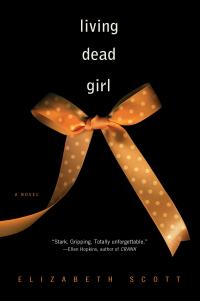About the Book
When Alice was ten, Ray took her away from her family, her friends — her life. She learned to give up all power, to endure all pain. She waited for the nightmare to be over. Now Alice is fifteen and Ray still has her, but he speaks more and more of her death. He does not know it is what she longs for. She does not know he has something more terrifying than death in mind for her.
Pre-Reading Activity
Ask students to write down the definition of oxymoron, then have them discuss possible meanings for the phrase “living dead.” What inferences and predictions can they make about the story? What kinds of experiences would make them — or anyone — feel “living dead?”
Discussion Questions
- In the first three chapters, Alice’s story moves from third-person point of view, to second, then to first. While most of the story is told from first-person point of view, what effect does the shift have on your responses to the story? What do you think the author hoped to achieve in shifting the point of view?
- At one point when Ray is abusing Alice she thinks, “…the thing about hearts is that they always want to keep beating.” What does this passage say about her resiliency and the way in which the story plays out in the end?
- Jake tries to help Alice in the end. Why do you think he did so? Why did he take a gun to the park instead of reporting his suspicions to the police?
- Many children today are abducted, abused, and held in captivity — many are held for years like Alice, and when given opportunities to escape, they don’t. Why doesn’t Alice leave, even though she has many opportunities to do so? How does Ray hold her emotionally captive?
Extension Activities
- Have students read a classical poem or short story that uses stream of consciousness and compare and contrast style and the overall effect and mood of the two pieces. After comparing and contrasting the two pieces, have students write a poem or short story using stream of consciousness.
- For five years, Kyla (a.k.a. Alice) lived a life of fear. From the age of ten until fifteen she missed many childhood experiences. Imagine you could give back some of the childhood experiences she missed. Collect symbols for five experiences and present those to the class. Write a brief narrative about one and why it is an important experience for a young girl.
- Working in groups, have students research child protection laws in their community and tips for keeping children safe. Have each group develop brochures and a PowerPoint presentation to share with the class. Consider sharing the presentations with parent groups such as the PTSA or athletic boosters.

Living Dead Girl
Age Level:
YA 